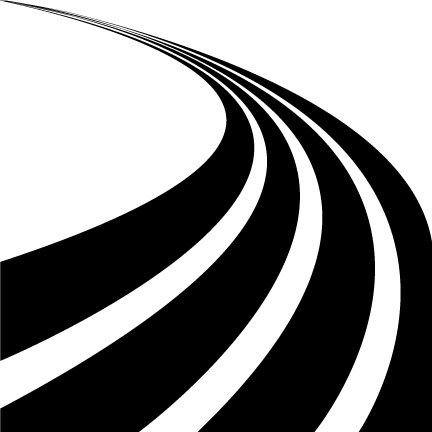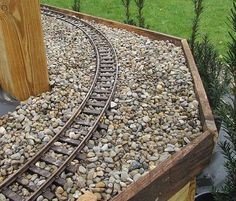A transition curve is a mathematically designed curve used in road, railway, and canal engineering. Its purpose is to smooth the transition between a straight section and a circular section of a track, road, or canal. The curve is used to ensure a gradual change in curvature and to reduce the effects of centrifugal force on vehicles or vessels travelling on the curved path. In this article, we will explore the various aspects of transition curves.

Source: Pinterest
See also: Superelevation in road design: What is it and how is it determined?
Transition curve: Design
The design of a transition curve is based on the principle of increasing the curvature gradually as the track or road transitions from a straight section to a circular section. The length of the transition curve is determined by the radius of the circular section and the degree of curvature required. The length of the transition curve increases as the degree of curvature increases. The most common type of transition curve is the clothoid curve, which is a type of spiral curve that has a varying radius of curvature along its length.
Transition curve: Types
There are several types of transition curves that can be used to gradually transition between two straight sections of a road, railway, or other linear structure. The three most commonly used types are:
- Circular transition curve: This type of curve has a constant radius throughout the transition section. It is the simplest type of transition curve, but it can cause discomfort and safety hazards if the radius is too small.
- Clothoid (or Euler spiral) transition curve: This type of curve has a continuously changing radius that follows a mathematical spiral known as a clothoid or Euler spiral. It provides a smoother transition than a circular curve and is commonly used in high-speed railways and highways.
- Cubic parabola transition curve: This type of curve has a parabolic shape and a variable radius that changes more rapidly than a circular curve but less rapidly than a clothoid curve. It is commonly used in low-speed railways and highways.
Other less commonly used transition curve types include the spiral curve, cubic spiral, and power spiral, each with unique mathematical properties and design considerations. The choice of curve type depends on factors such as design speed, available space, and design standards.

Source: Pinterest
Transition curve: Function
The primary function of transition curves is to provide a gradual transition between two straight sections of a road, railway, or other linear structure. This gradual transition serves several purposes, including:
- Reducing discomfort and safety hazards: Sudden changes in curvature can cause discomfort for passengers and create safety hazards, such as derailment or loss of control. Transition curves provide a smooth and gradual change in curvature, which reduces these risks.
- Distributing forces: Sharp curves can cause excessive wear and tear on rails, wheels, and other components of the transportation system. Transition curves distribute the forces and reduce wear and tear, which can extend the lifespan of the infrastructure and reduce maintenance costs.
- Enhancing ride comfort: By reducing the lateral acceleration experienced by passengers, transition curves can enhance ride comfort and reduce fatigue.
- Increasing capacity: By reducing the need for speed restrictions at sharp curves, transition curves can increase the capacity of a railway or highway, which can reduce congestion and improve travel times.
- Improving aesthetics: Transition curves can be designed to blend into the surrounding landscape or urban environment, which can improve the aesthetics of the transportation system and reduce visual impacts.
Overall, the function of transition curves is to balance the competing demands of ride comfort, safety, capacity, maintenance, and aesthetics, making them an essential element of modern transportation design.
FAQs
What is the purpose of a transition curve?
The purpose of a transition curve is to reduce discomfort and safety hazards, distribute forces, enhance ride comfort, increase capacity, and improve aesthetics.
What are the different types of transition curves?
The most commonly used types of transition curves are circular, clothoid (or Euler spiral), and cubic parabolic. Other less commonly used types include the spiral curve, cubic spiral, and power spiral.
How is the radius of a transition curve determined?
The radius of a transition curve is typically determined based on factors such as design speed, superelevation, and vehicle dynamics, using iterative calculations and simulations to optimise the curve parameters.
What are the benefits of using a transition curve?
The benefits of using a transition curve include a smoother ride, improved safety, reduced wear and tear, increased capacity, and improved aesthetics.
| Got any questions or point of view on our article? We would love to hear from you.
Write to our Editor-in-Chief Jhumur Ghosh at [email protected] |
Housing News Desk is the news desk of leading online real estate portal, Housing.com. Housing News Desk focuses on a variety of topics such as real estate laws, taxes, current news, property trends, home loans, rentals, décor, green homes, home improvement, etc. The main objective of the news desk, is to cover the real estate sector from the perspective of providing information that is useful to the end-user.
Facebook: https://www.facebook.com/housing.com/
Twitter: https://twitter.com/Housing
Email: [email protected]











